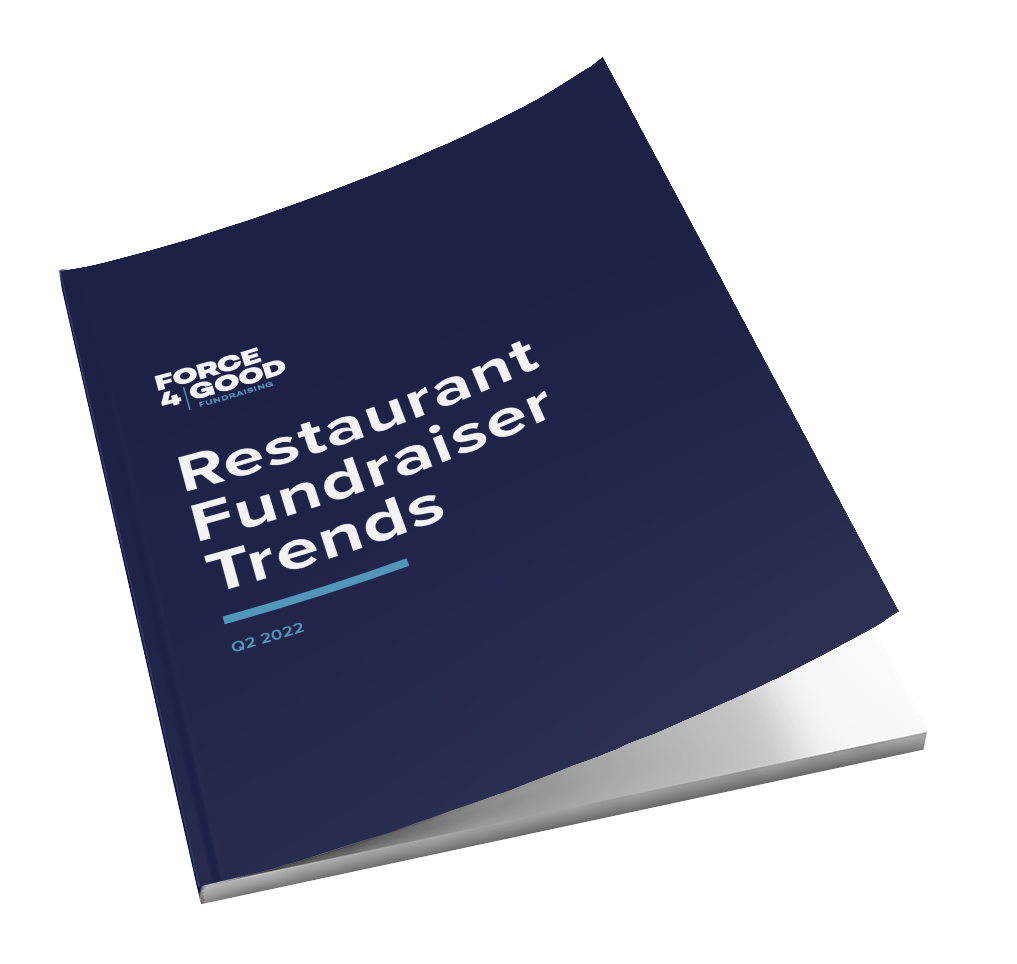Want to bring giving back to your restaurant? There’s no shortage of reasons why all brands should incorporate giving back in their mission. Besides simply being the right thing to do, mission-driven brands with generous give-back programs experience greater employee engagement. Consumers feel better about choosing your brand, too.
While giving back in nearly any way is a net positive, not all methods are equal. In fact, some can cause friction with your customers if not handled properly. For example, this recent study from Ohio University found that charity prompts at grocery stores and fast food restaurants, like rounding up your purchase total to the nearest dollar, often increase anxiety in shoppers. When interviewed about their checkout experiences and being asked to make a donation, 40% of the words used by participants had negative feelings associated with them, like ‘pressured,’ ‘annoyed,’ and ‘concerned about being judged.’ How you approach your customer and ask them to participate can make or break your program and even influence your brand experience.
There are many meaningful ways for restaurants to give back, each with their own pros and cons. Below, we’ve rounded up some top strategies to consider as you look toward growth in the new year.
1. Product/coupon/voucher donations
How it works: Products or services are directly donated to organizations – think of donations to a silent auction or raffle.
Pros:
- Often simple to administer – groups apply and your restaurant reviews and fulfills requests
- Places your brand in front of more eyes
Cons:
- Impact may be tough to measure
- Higher risk of fraud as organization verification and use of donated items are difficult to regulate
- Little to no control on how your product and brand are represented
2. Round-up/checkout campaigns
How they work: Popular at grocery stores, fast food restaurants, and retail stores, round-up campaigns involve customers being asked to donate or round up their purchase to the nearest dollar while at checkout.
Pros:
- Simple to track and easy for team members to implement
- Customers provide the donation
- Small donation amounts mean customers are more likely to contribute
Cons:
- May make guests feel anxious or pressured to donate, which could cause negative sentiments
- Misconceptions in how these campaigns work may leave guests feeling as though companies are “passing the buck” instead of donating themselves (which is not the case, in the majority of situations)
3. Food donations
How it works: Organizations ask or apply for food donations, which your restaurant fulfills. For example, your restaurant could cater a PTA meeting or donate a post-game meal to the local soccer team. Many restaurants also partner with organizations like Feeding America to donate extra or leftover food to food banks that may otherwise become waste.
Pros:
- Builds community support and establishes your restaurant as a pillar of the community
- Feeds those in need and prevents food waste
Cons:
- Depending on the scale, donating food consistently to organizations can become expensive for restaurants
4. Sponsorships/partnerships
How it works: Most readers are familiar with sponsorship agreements and partnerships. A business donates money to an organization in exchange for something like brand collaborations, ad placement, or client leads.
Pros:
- Can place your business in front of new audiences
- Associates your brand with the organization you’re partnering with
Cons:
- Often limits your impact to only the team or group you’re sponsoring
- Sponsorships usually have a poor ROI and are mainly used for visibility
5. Monetary donations (direct giving)
How it works: Monetary donations give cash directly to those who need it. Giant novelty check not required.
Pros:
- Cash or check donations place money in organization’s hands quickly and allows them to use the funds in any way needed
- Direct donations require little to no lift from restaurant teams who find themselves too busy for other methods of philanthropy
Cons:
- While maybe the most generous form of giving, businesses only making monetary donations lose out on some of the benefits that other forms of donations provide, like the customer and sales gains attributed to fundraisers
- It can sometimes be difficult to find meaningful groups to donate to and still feel confident that the donation is being used for its intended purpose
6. Volunteer days
How they work: Companies provide paid volunteer days for their employees to do good in their communities. Just like vacation time, employees schedule days to donate time they would normally be working to a nonprofit organization. Some companies opt for larger, organized volunteer day events where the entire team turns out to clear and till community garden beds, process food bank donations, etc. They’re a ton of fun and a great way for the team to bond while helping out your community.
Pros:
- Builds camaraderie among your team
- Provides crucial labor for non-profits that seriously benefit from the extra hands
Cons:
- Can be difficult for some restaurants to handle staffing during volunteer days without splitting up teams or closing the business for the day
7. Investing in your employees
How it works: While the give-back methods discussed so far focus on those outside your restaurant, investing in your own employees always pays dividends: happy employees = happy restaurant. Companies will often do this by creating hiring initiatives for veterans or people with disabilities. Job training programs for those experiencing homelessness (or getting back on their feet), college/education funds, employee healthcare assistance programs, and retirement funds are all other great ways to invest and give back to your own employees.
Pros:
- Increases employee morale, loyalty, and retention
- Sets your restaurant apart as a great place to work
Bonus: Fundraisers (of course)!
How they work: Organizations host a fundraiser with your restaurant in which a percentage of sales are donated from the supporter’s purchases, typically around 15-30%. These events are growing in popularity with restaurant brands as easy, yet meaningful ways to give back. Out of all the approaches on this list, fundraisers strike the perfect balance of being both generous and repeatable without impacting your business. This means you could host dozens of fundraisers a year and benefit many different groups in your community!
Pros:
- Extremely simple to administer when using a fundraiser portal like Force4Good
- Donation amounts can be significant and massively helpful for a smaller organization
- Establishes your restaurant as a supportive community pillar
- Wins new customers (an average of 20 per fundraiser)
- Drives revenue during slower time periods
Cons:
- If not using an efficient platform, can take a tremendous amount of overhead (time and staffing) to deliver
Final thoughts
When it comes to giving back, it’s important and rewarding to find the approach that works best for your restaurant, staff, and customers.
If you’re looking for a way to give back that checks the boxes of being generous, builds brand loyalty, attracts new customers, and makes employees proud to work for you, consider bringing fundraisers to your restaurant. A fundraising portal like Force4Good makes these fun and impactful events simple to add to your business and growth strategy. Contact us today or reach out to request a demo!


